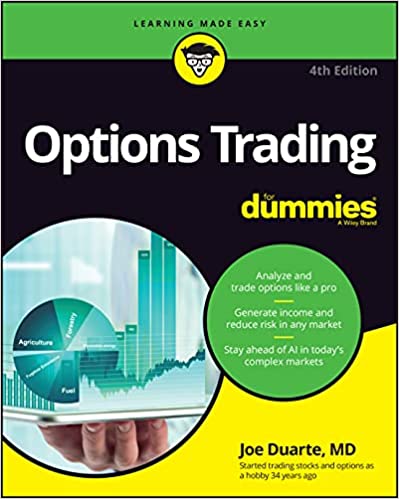Joe Duarte’s Smart Money Trading Strategy Weekly
By Joe Duarte Editor Joe Duarte in the Money Options
Stocks Exhibit Surprisingly Bullish Tone. Why Options Make Sense in this Market.
January 14, 2024
The bounce in the stock market boosted by the short squeeze in the Magnificent Seven stocks housed in the QQQ ETF, which I predicted here last week may have some staying power as the Nasdaq 100 Index (NDX) remains resilient. This bullish undertone was evident as stocks recovered following the CPI miss and the better than expected results from PPI. That this happened in the face of persistently bullish sentiment readings in the CNN Fear/Greed index and hawkish talk from the Fed is well worth noting.
Thus, while acknowledging that things could rapidly devolve, the action in stocks still resembles a sector rotation more than a full blown correction. Still, risk remains higher than normal as markets must wrangle with what could be an escalation of the situation in the Red Sea and the Middle East.
So, keep these factors in mind:
- The Fed is talking tough but is not very likely to raise interest rates unless inflation truly ramps up. Flat CPI and falling PPI numbers bought the market some time;
- Sentiment is still too bullish as the CNN Fear/Greed Index closed at 71 - well in the GREED zone. This may keep a lid on gains but currently does not seem to be taming the bulls;
- The CBOE Put/Call Ratio closed at 0.88 after topping out near 1.25 during the week – suggesting the bears are losing their grip on the pullback; and
- The CBOE Volatility Index (VIX) remained well below 15 – thus, put option volume remains stable proving that the rise in the P/C ratio was being influenced by a decrease in call option buying, not a rise in the volume of put options.
These factors reflect the current uncertainty and suggest the market will remain in a bumpy consolidation pattern; albeit with a bullish, sector specific bent. Thus, a combination strategy is required, involving taking profits where it’s warranted, buying dips as they materialize, and deploying money into new areas that are exhibiting relative strength; while keeping a wary eye on the external factors which affect daily trading and how the markets respond.
Here's a roadmap:
- Stick with what’s working; if a position is holding up – keep it;
- Take profits in overextended sectors;
- Consider short term hedges;
- Increase exposure to options;
- Look for value in out of favor areas of the market that are showing signs of life; and
- Protect your gains with sell stops and keep raising them as prices of your holdings rise.
Why Options Make Sense in this Market
The current market offers bearish profit opportunities due to event risk as well as profitable trading on the long side. Yet, after many years of gains in stocks, the prices for many individual company shares has reached a point where many investors are shunning opportunities to trade.
That’s why I’ve increased the number of option recommendations in my service – Joe Duarte in the Money Options.com, and will likely continue the practice for the foreseeable future. So far so good; I recently recommended a put option trade based on Apple (AAPL), which yielded over 140% in profits in five days ($421 per contract), over which the stock lost 14% of its value ($1400 per 100 shares). Of course, not every option trade works out perfectly. But my point is that when managed correctly, the addition of option trades to any portfolio is worthwhile.
Here’s a great example of the logic behind a potential future trade.
A 100 share block of semiconductor juggernaut Nvidia (NVDA) recently cost around $55,000. A ten percent move, which is not uncommon in 24-48 hours for this stock would yield a $5,500 gain or loss, depending on the direction. In contrast, an NVDA option, such as the February 16, 2023 $560 Call Option recently traded for $25.20. One contract would cost $2520. Thus, if NVDA moved toward the strike price of $560, the option had the potential to gain close to $600, a nearly 24% move.
Moreover, a move above $560 would put the option in the money, which means it would trade on par with the stock (a $1 gain in the stock would equal a $1 in the option), offering the potential for extraordinary gains. In addition, you can apply similar logic to a downside strategy via the purchase of put options.
Remember that options are best during periods in which markets exhibit higher than normal intraday volatility. These periods shake up the market’s sentiment eventually setting up the next market rally.
Options also offer the opportunity to generate income during uncertain periods in the market. Here’s a primer on how to go about it.
For details on my latest option trades and on which areas of the market make sense currently consider a FREE Trial to Joe Duarte in the Money Options.com.
Bond Yields Remain Remarkably Stable
The December CPI number came in hotter than expected, but the PPI number was cooler. So, the inflation hawks pulled back their claws and the U.S. Ten Year Note yield (TNX) fell back below 4%. The subsequent decline in bond yields kept a floor under the shaky stock market.

With TNX below the 4-4.1% yield range stocks are more likely to remain stable, despite the worsening geopolitical background. A break above 4.1%, or a fall below 3.8% will likely trip algo programs in both stocks and bonds. Range bound trading if TNX will reflect in choppy trading in stocks.
QQQ Gets Squeezed as EV Stocks Collapse Restaurants Get Nibbles
The Invesco QQQ Trust (QQQ) weathered the storm caused by the implosion of EV kingpin Tesla (NSDQ: TSLA), closing within reach of its recent high and above its 20 and 50-day moving averages. The ADI and OBV are now in sync, with short sellers bailing out (rising ADI) and buyers openly moving back in (bottoming OBV). This action confirmed my expectations for a short squeeze, which I described last week in this space.

On the down side, it’s hard to ignore the breakdown in the EV stocks as Tesla closed a factory in Germany because of Red Sea related supply chain problems and car rental company Hertz (HTZ) announced it will be selling 20,000 EVs to be replaced by gasoline powered cars.

The Global X Autonomous and Electric Vehicle ETF (DRIV) tumbled below is 200-day moving average and is now testing the support of its 50-day line. Compare the bearish ADI and OBV trends in DRIV to the bullish ones for QQQ.

On the other hand, the Invesco Dynamic Food and Beverage ETF (PBJ) chugged along in its bullish consolidation pattern where a potential breach of the $46 area could send it significantly higher.

Meanwhile, the SonicShares Global Shipping ETF (BOAT) rebounded on the expansion of hostilities in the Middle East. BOAT found support at its 20-day moving average recently.

If you saw this post , you would have been prepared for the rally in the shipping stocks. For detailed, current Buy and Sell recommendations on shipping and other important stocks click here.
Market Breadth Remains Stable. NDX Preps for Move to 17,000.
The NYSE Advance Decline line (NYAD) found support at its 20-day moving average – a bullish development which supports the idea that we are in a sector rotation until proven otherwise.

The Nasdaq 100 Index (NDX) looks set to test the 17,000 resistance area after holding above 16250, which is the top end of a three bar VBP cluster (horizontal bars at left of chart). The 50-day moving average continues to provide intermediate term support.

The S&P 500 (SPX) is in a similar technical posture to NDX, with the 4800 resistance area looming as a key test.

VIX Remains Below 20
The CBOE Volatility Index (VIX) remains stubbornly below 20, as it has for the past few weeks. This remains a bullish factor for stocks. If VIX remains subdued more upside is possible.
A rising VIX means traders are buying large volumes of put options. Rising put option volume from leads market makers to sell stock index futures to hedge their risk.
A fall in VIX is bullish as it means less put option buying, and it eventually leads to call buying which causes market makers to hedge by buying stock index futures raising the odds of higher stock prices.
To get the latest up to date information on options trading, check out “Options Trading for Dummies”, now in its 4th Edition – Available Now!
#1 New Release in Options Trading
Now in Audible Audiobook Format
Options Trading for Dummies (4th Edition)  Audible Audiobook – Unabridged Audible Audiobook – Unabridged
Joe Duarte MD (Author), Terrence Kidd (Narrator), Tantor Audio (Publisher)
4.5 out of 5 stars 61 ratings
#1 New Release in Investment Analysis & Strategy
# 1 New Release on Options Trading

Good news! I’ve made my NYAD-Complexity - Chaos charts featured on my YD5 videos, and a few more available here.
Joe Duarte is a former money manager, an active trader and a widely
recognized independent stock market analyst since 1987. He is author
of eight investment books, including the best selling Trading
Options for Dummies, rated a TOP
Options Book for 2018 by Benzinga.com - now in its third edition, The
Everything Investing in your 20s and 30s and six other trading books.
Meanwhile, the U.S. Ten Year note yield (TNX) is trading in a The
Everything Investing in your 20s & 30s at Amazon and The
Everything Investing in your 20s & 30s at Barnes and Noble.
A
Washington Post Color of Money Book of the Month is now available.
To receive Joe’s exclusive stock, option, and ETF recommendations, in
your mailbox every week visit https://joeduarteinthemoneyoptions.com/secure/order_email.asp.
JoeDuarteInTheMoneyOptions.com is independently
operated and solely funded by subscriber fees. This web site and
the content provided is meant for educational purposes only and
is not a solicitation to buy or sell any securities or investments.
All sources of information are believed to be accurate, or as otherwise
stated. Dr. Duarte and the publishers, partners, and staff of joeduarteinthemoneyoptions.com
have no financial interest in any of the sources used. For independent
investment advice consult your financial advisor. The analysis
and conclusions reached on JoeDuarteInTheMoneyOptions.com are the
sole property of Dr. Joe Duarte.
| 




